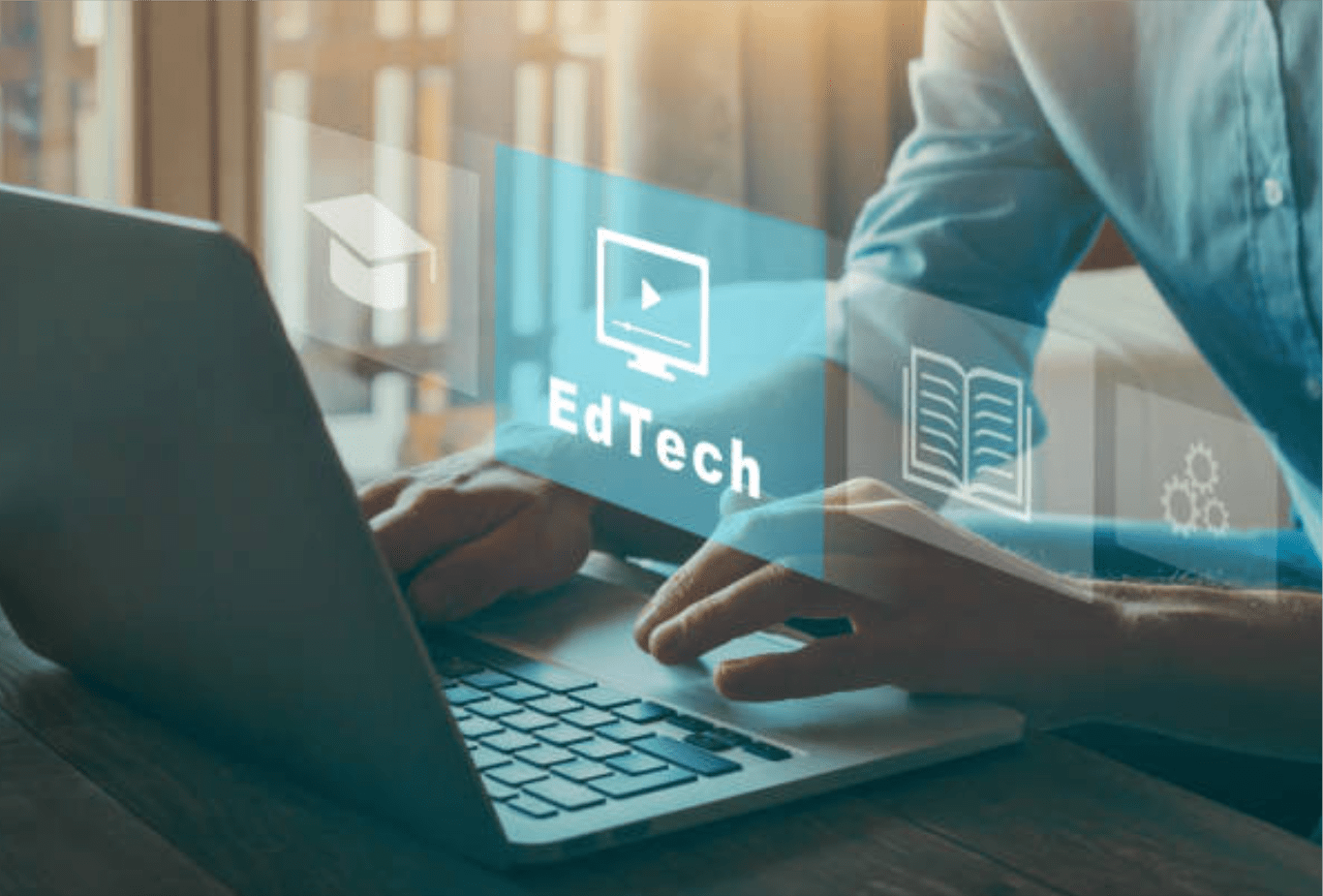
Classrooms have come a long way from chalkboards and textbooks. Today, technology is shaking up tired old teaching methods and creating dynamic new learning experiences. Virtual reality field trips to Mars, AI tutors that get personalized, and robot teachers – these may sound futuristic, but emerging innovations are bringing them closer to reality.
This article will explore how the EdTech revolution is transforming classrooms. What cutting-edge tools are connecting with students? How are teachers leveraging data and analytics to customize lessons? And what does this digital-first future mean for the role of educators? From 3D printers to immersive VR, some groundbreaking technologies could define future pedagogy. Let’s dive in to see how classrooms are entering an exciting new era of innovation. The age of the hi-tech classroom has arrived!
The Rise of EdTech in Modern Classrooms
Schools have been integrating technology into the classroom for decades, from film projectors to electronic whiteboards. However, in recent years, the educational technology (EdTech) landscape has been progressing rapidly, ushering in an exciting new era of teaching and learning. According to HolonIQ, the global EdTech market is estimated to grow from $163 billion in 2020 to $404 billion by 2025. This exponential growth underscores the increasing role of technology in enhancing student achievement.
Current trends like blended learning, gamification, and adaptive software are transforming traditional pedagogical models. Teachers are leveraging these digital tools to create blended learning environments, where students receive instruction via online media and conventional in-person teaching.
Additionally, educators can enhance engagement and retention by using community platforms for membership that offer interactive and engaging tools to create interactive courses, fostering a more dynamic learning environment.
Educational games and adaptive software use data analytics to provide personalized learning experiences catered to student’s strengths and needs. The effective integration of such technologies has shown improved knowledge retention, engagement, and student outcomes.
Key Emerging Technologies in Education
Some emerging technologies hold great promise to amplify the benefits of educational technology. Their creative application in classrooms can help students develop important skills to thrive in the 21st century.
Virtual Reality (VR) and Augmented Reality (AR)
Immersive technologies like VR and AR are changing how teachers deliver lessons and students absorb information. VR headsets allow students to be transported to an interactive 3D environment related to their learning, whether exploring outer space or touring historical sites. Teachers can design immersive VR field trips to enrich traditional instruction. AR overlays digital information onto the physical environment. For example, students can use AR apps to visualize complex 3D diagrams or access contextual information about artifacts in a museum. While still nascent, VR and AR are gaining wider adoption as costs lower. Their creative use can boost student engagement and conceptual understanding.
Artificial Intelligence (AI) and Machine Learning
AI applications are revolutionizing personalized learning. Algorithms can analyze a student’s strengths and weaknesses in real-time and create tailored educational experiences. The data generated by such systems provide teachers with deeper insights into each student’s progress and allow them to modify instruction accordingly. For instance, AI tutoring systems like Thinkster Math can track students’ proficiency levels across concepts and provide customized problem sets to improve mastery. As AI and machine learning continue to evolve, they hold exciting potential to reshape how teachers teach and students learn.
Learning Analytics and Big Data
Data analytics tools leverage the enormous amount of student learning data being generated to uncover meaningful patterns and insights for better decision-making. Learning management systems capture vast data trails like assignment and exam performance, online participation, and engagement with course materials. Advanced analytics techniques help administrators identify at-risk students in need of intervention, improve resource allocation, and inform strategic initiatives. For teachers, data-driven dashboards provide actionable insights to modify their teaching strategies and curricula for enhanced learning outcomes. Used ethically, data analytics can enable education systems to make evidence-based decisions for student success.
The Impact on Teachers and Students
The influx of emerging education technologies is fundamentally changing the role of teachers and reshaping how students learn. Teachers are increasingly adopting the roles of facilitators and co-learners, guiding students through technology-enabled experiences. Educators now have access to powerful new teaching tools and real-time student data analytics to continuously modify their instructional methods and provide personalized feedback.
For students, these innovations are creating modern, digitally connected classrooms that promote self-directed learning and the development of future-ready skills like problem-solving, critical thinking, and digital literacy. Students can tap immersive technologies like VR for experiential learning or use AI tutoring systems for personalized support. However, successfully leveraging these technologies requires students to build skills in self-regulation, media literacy, and responsible digital citizenship.
Challenges and Considerations
While promising, effectively integrating emerging education technologies poses financial, logistical, and ethical challenges. Schools often face budget constraints in procuring technological solutions and hardware, ensuring IT infrastructure readiness, and providing teacher training. Thoughtful policies and changes to curriculum, teacher training, and school budgets are needed to support adoption. There are also accessibility barriers for students from disadvantaged backgrounds that must be addressed.
Furthermore, the collection of student learning data raises concerns around privacy, security, and appropriate usage that schools must carefully navigate. More research into the long-term impacts of prolonged technology exposure is also warranted. A balanced approach is required to maximize the benefits of new technologies while mitigating any unintended adverse consequences.
Case Studies and Real-World Examples
Many schools and institutions around the world are pioneering the use of emerging technologies to redefine teaching and learning:
- Temple University has integrated VR into its medical, dentistry, and engineering programs to provide immersive training simulations that enhance traditional methods. Students reported that the VR experiences helped improve their confidence, and knowledge retention, and took their learning to the “next level.”
- The British School Jakarta in Indonesia implemented AI-driven personalized math tutoring software and saw a dramatic 96% improvement in student scores within seven months. The AI system provided customized exercises and support as per each student’s strengths and weaknesses.
- Salman Khan’s renowned Khan Academy is leveraging data science techniques to refine curriculum content and better monitor student progress. Their continuous experiments and analytics have helped improve student learning outcomes on the platform.
These examples demonstrate how emerging technologies like VR, AI, and data analytics can be leveraged creatively to increase student engagement, boost achievement, and set a new benchmark for innovation in education.
Conclusion
Education is on the cusp of a technological revolution. Emerging innovations in VR, AI, data analytics, and beyond are profoundly transforming traditional learning environments. As these technologies continue advancing, they hold exciting promise to make learning more personalized, experiential, and engaging. However, effectively integrating them hinges on adapting teacher training, school resourcing, curricula, and policies accordingly. A nuanced approach is needed to maximize benefits while mitigating risks. The classroom of the future will be a fascinating blend of emerging technologies and time-tested methods. The transformative potential provides much reason for optimism that today’s students can be equipped with the knowledge and skills to thrive in our rapidly evolving world. By fostering the creative usage of promising new tools while addressing challenges, we can usher in an exciting new era of innovation in teaching and learning.



